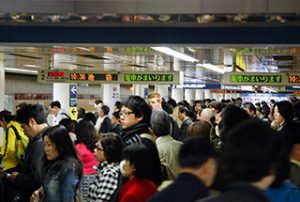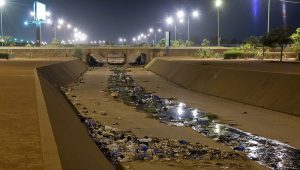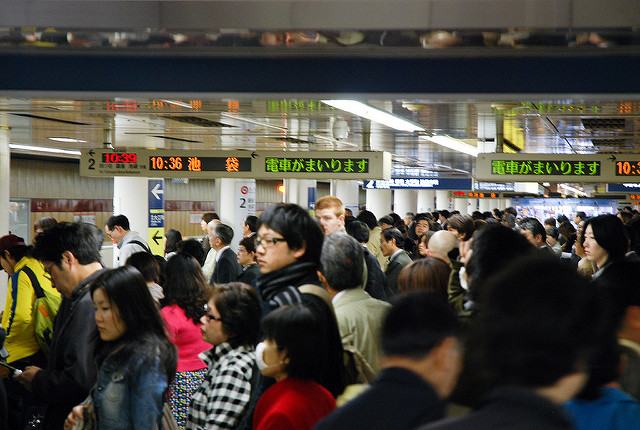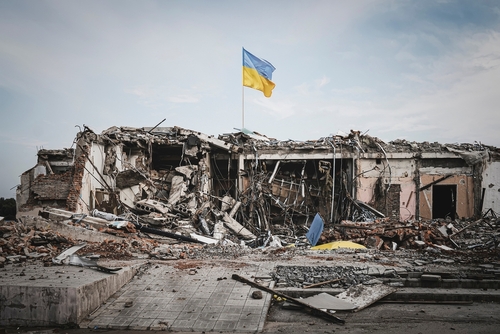


The waste crisis and urban fabric in Beirut
12 October 2017
Are metropolises governable?
12 October 2017A CNRS research director at the Centre for the Sociology of Organizations, Olivier Borraz conducts research on risk governance. Initially focused on environmental and health issues, his research has expanded to cover risk regulation policies. Here he provides an analysis of the risks affecting megalopolises and calls for increased awareness of the fact that public policies themselves can generate risks.

Crowded Subways in Tokyo? Are you sure? by Théo CC BY-NC-SA 2.0
etropolises are unsurprisingly exposed to many risks. An extreme concentration of populations combines with economic and social inequalities, with major flows of goods and people that course through the cities daily and with interdependent technical networks, to create vulnerability to disruptions resulting from natural, technical or manmade hazards.
Limited prevention and management mechanisms
These disruptions can be contained through social structures and forms of solidarity that form to manage incidents. They can also be circumscribed through the implementation of backup infrastructure to ensure continuous water and energy supplies, for example.
This is referred to as resilience, a notion that is highly ambiguous and most often used to make risks palatable rather than to truly address their causes. But sometimes these disruptions overwhelm the capacities of territories that cannot halt the occurrence of a disaster.
The importance of a global political vision

Street dwellers in Mumbai. by Stephen Codrington CC : 2.5 Generic license.
Risks of urban catastrophe are defined by the confluence of a hazard and vulnerability. When geographers introduced this definition in the 1980s the idea was to show that the vulnerability of urban regions is not only tied to geophysical and demographic variables, but also stems from political choices in urban planning: be it the provision of public services, the organization of networks (transportation, electricity, water, waste), the priority accorded to the central neighborhoods home to most economic and touristic activities, or the relegation of poor populations to peripheral zones exposed to natural hazards (flooding, landslides). This research also shows that despite the concentration of risks in certain populations, catastrophes have the unfortunate tendency of producing effects throughout the urban region, simply because it remains a system of complex interdependencies wherein parts cannot easily be isolated from the whole.
Invisible daily risks

Shadow City – A look at Dharavi. Akshay Mahajan, Flickr, CC BY-NC-SA 2.0
However, this definition needs to be complemented in two ways. By emphasizing catastrophes, other, more discrete phenomena – malnutrition, violence, recurring small fires, disease, road accidents, etc. – remain invisible. While catastrophes capture the public imagination by their suddenness and impact, the most significant health and social consequences of the development of megalopolises come in the form of ordinary risks that do not attract the attention of the media or of policymakers. Thus, risks accumulate, with the poorest populations exposed on a daily basis to a host of dangers that, in the aggregate, compound their vulnerability and create one of the defining characterisitics of these megalopolises.
When cities generate their own risks

Pollution d’un canal ouagalais by Roman Bonnefo, CC BY-SA 4
It is generally agreed that hazards have an exogenous origin – a virus, terrorism, an earthquake – which enables the attribution of responsibility for its occurrence elsewhere. However, their origin can also be tied to endogenous processes in urban development. For example, the proximity of intensive poultry and pork farms to extremely dense urban zones in Southeast Asia increases the chances of the emergence of an influenza pandemic; wealth inequality in African and Latin American cities and the forms of political violence to which they can be conducive; and the increasingly well-documented health effects of air pollution in the megalopolises.
Understanding the risks of megalopolises requires an exploration of the political choices that feed into their vulnerability and a focus on their responsibility and role in the emergence of hazards.
Previous article : Data’s effect on urban governance <-> Next article : Beyond Cogito: all Sciences Po urban research and courses




